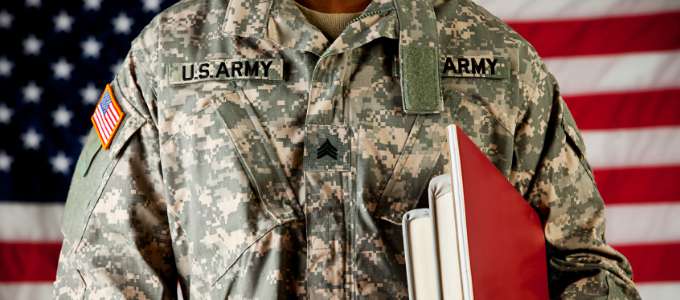Imagine an army medic charged with saving lives on the battlefield. Training includes first aid procedures, and day-to-day activities include applying that knowledge literally under fire. But once a military member exits the service and enters college or the job market, all of that learning and experience becomes elective course credit according to a college, if it becomes credit at all.
“They may have to take a medical terminology class when they have 10 or more years of experience,” said Tara Underwood, associate professor at Columbus State University. “It can be almost an insult when they’ve got this experience and have to sit in a classroom with freshmen just out of high school.”
Underwood and other educators apply Credit for Prior Learning practices to post-military students so they receive due credit for the skills they learned while serving. Learning leaders can use these credits to understand in traditional terms what employees learned in nontraditional settings — and bring that knowledge into the workplace.
“They’re training to mission, not necessarily for college credit,” Underwood said. “They’re training specifically to save a life or effectively and efficiently maintain a healthy base, healthy community and healthy service members.”
By evaluating the education required to become an army medic, hospital corpsman or other highly skilled military member, colleges assign equivalent course credit that applies toward a degree rather than acts as unrequired electives. It cuts down on the time it takes for employees to get a degree, as well as more accurately reflects their knowledge and skills to employers looking at their transcripts.
Companies can fill skills gaps with post-military employees who have the experience but not the traditional degree, said Mary Beth Lakin, director of college and university partnerships at the American Council of Education, which has reviewed military training since after WWII.
Implementing a Credit for Prior Learning program has its challenges, however. For instance, employers and employees aren’t always aware this is an option, or they don’t have sufficient information on it. Institutions also have a difficult time conveying what it is and how organizations can use it to their advantage.
But Lakin said there are solutions. For example, provide online resources and create a common language that is applicable to everyone from higher education to workers and their employers. It also helps to identify an expert in the organization who works with the chief learning officer and can act as an adviser to employees looking to put military skills toward a college degree.
Lakin said this is especially helpful if the organization has a college tuition assistance program because veteran employees might be a semester or two into their degree just through military experience, which saves the organization time and money.
But even if an organization doesn’t provide college tuition, having employees who have a leg up in education based on their military experience can improve career mobility, retention and motivation.
“It can be not only motivational for the employee, but also beneficial to the employer in terms of the kinds of employees they keep and are able to move up in the company,” Lakin said.















